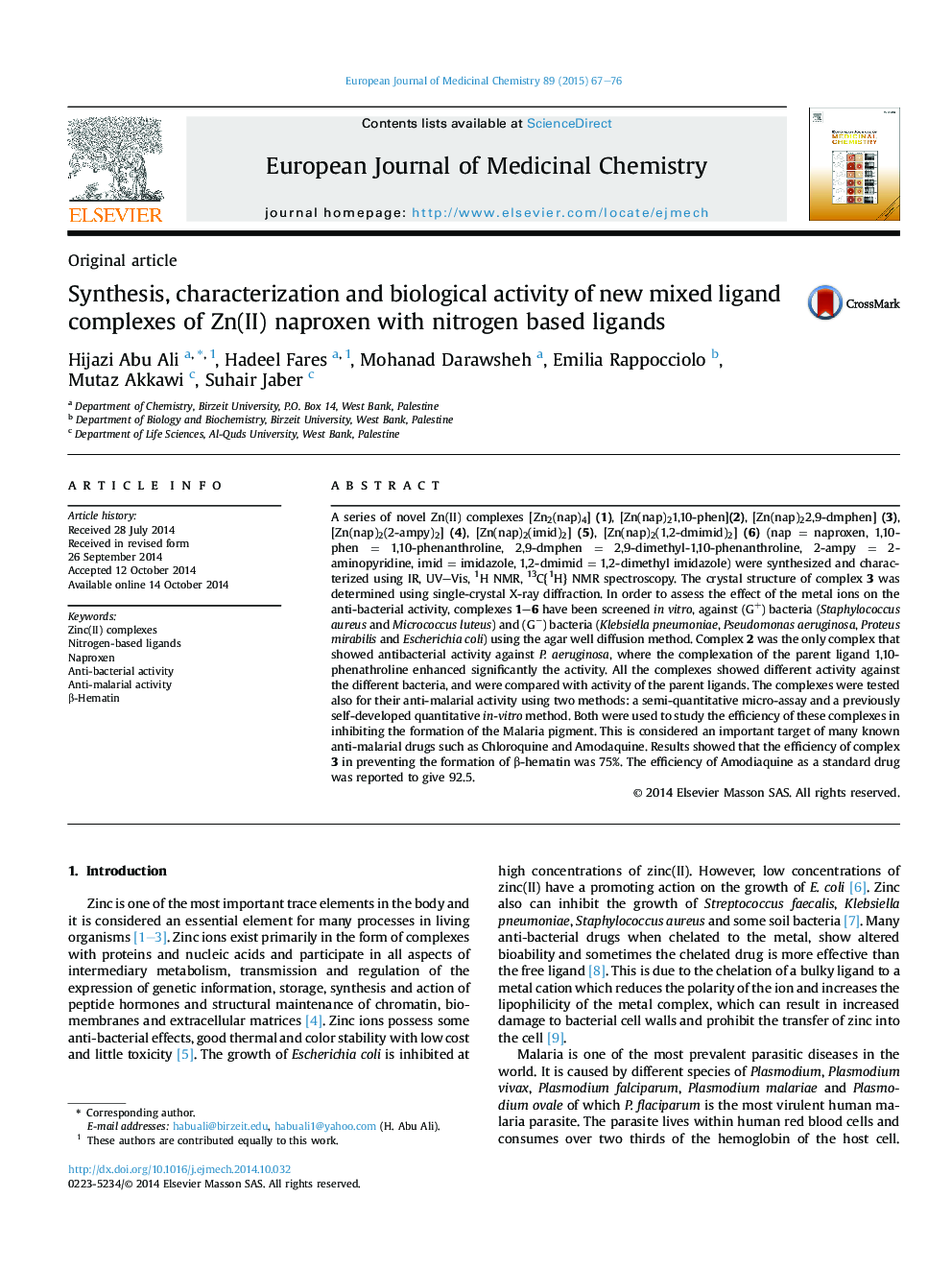| Article ID | Journal | Published Year | Pages | File Type |
|---|---|---|---|---|
| 1392225 | European Journal of Medicinal Chemistry | 2015 | 10 Pages |
•New mixed ligand zinc(II) complexes of naproxen acid and nitrogen-based ligands were synthesized.•The complexes were characterized using various spectrometric techniques.•In-vitro anti-bacterial activity against several bacterial species was studied.•In-vitro anti-malarial activity of complex 3 against the formation of β-hematin was determined.
A series of novel Zn(II) complexes [Zn2(nap)4] (1), [Zn(nap)21,10-phen](2), [Zn(nap)22,9-dmphen] (3), [Zn(nap)2(2-ampy)2] (4), [Zn(nap)2(imid)2] (5), [Zn(nap)2(1,2-dmimid)2] (6) (nap = naproxen, 1,10-phen = 1,10-phenanthroline, 2,9-dmphen = 2,9-dimethyl-1,10-phenanthroline, 2-ampy = 2-aminopyridine, imid = imidazole, 1,2-dmimid = 1,2-dimethyl imidazole) were synthesized and characterized using IR, UV–Vis, 1H NMR, 13C{1H} NMR spectroscopy. The crystal structure of complex 3 was determined using single-crystal X-ray diffraction. In order to assess the effect of the metal ions on the anti-bacterial activity, complexes 1–6 have been screened in vitro, against (G+) bacteria (Staphylococcus aureus and Micrococcus luteus) and (G−) bacteria (Klebsiella pneumoniae, Pseudomonas aeruginosa, Proteus mirabilis and Escherichia coli) using the agar well diffusion method. Complex 2 was the only complex that showed antibacterial activity against P. aeruginosa, where the complexation of the parent ligand 1,10-phenathroline enhanced significantly the activity. All the complexes showed different activity against the different bacteria, and were compared with activity of the parent ligands. The complexes were tested also for their anti-malarial activity using two methods: a semi-quantitative micro-assay and a previously self-developed quantitative in-vitro method. Both were used to study the efficiency of these complexes in inhibiting the formation of the Malaria pigment. This is considered an important target of many known anti-malarial drugs such as Chloroquine and Amodaquine. Results showed that the efficiency of complex 3 in preventing the formation of β-hematin was 75%. The efficiency of Amodiaquine as a standard drug was reported to give 92.5.
Graphical abstractFigure optionsDownload full-size imageDownload as PowerPoint slide
